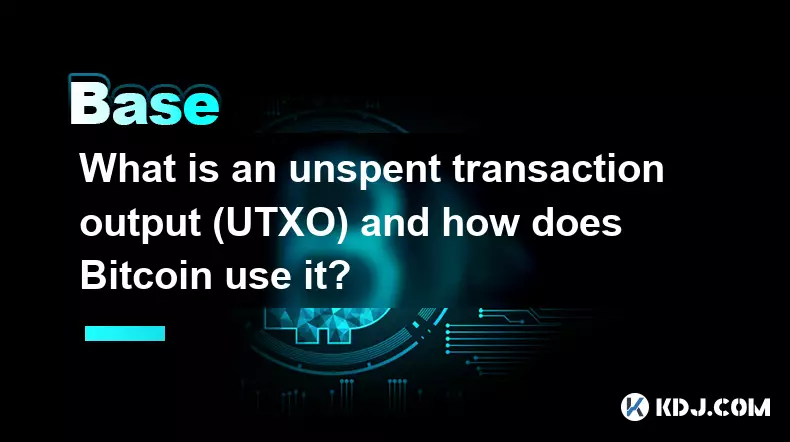-
 bitcoin
bitcoin $102182.982207 USD
-0.92% -
 ethereum
ethereum $3438.744518 USD
0.12% -
 tether
tether $0.999933 USD
0.02% -
 xrp
xrp $2.405093 USD
0.05% -
 bnb
bnb $956.306114 USD
-0.53% -
 solana
solana $153.028851 USD
-1.23% -
 usd-coin
usd-coin $0.999800 USD
-0.03% -
 tron
tron $0.294898 USD
-1.08% -
 dogecoin
dogecoin $0.171428 USD
-0.58% -
 cardano
cardano $0.551186 USD
-1.15% -
 hyperliquid
hyperliquid $38.755878 USD
0.04% -
 chainlink
chainlink $15.298460 USD
-0.05% -
 bitcoin-cash
bitcoin-cash $516.067428 USD
1.68% -
 stellar
stellar $0.280726 USD
-0.42% -
 zcash
zcash $518.919369 USD
18.01%
What is a multi-signature (multisig) wallet and how does it enhance security?
Multi-signature wallets enhance crypto security by requiring multiple private keys to authorize transactions, reducing risks of theft and key loss.
Nov 07, 2025 at 07:59 pm

Understanding Multi-Signature Wallets in the Cryptocurrency Ecosystem
A multi-signature wallet, commonly referred to as a multisig wallet, is a digital wallet that requires more than one private key to authorize a transaction. Unlike standard cryptocurrency wallets that operate on a single-key mechanism—where one private key grants full control over funds—multisig wallets distribute signing authority across multiple parties or devices. This structure introduces an additional layer of security by ensuring no single entity can unilaterally move assets.
In typical implementations, a multisig wallet might be configured with a 2-of-3 setup, meaning three unique private keys are associated with the wallet, but only two are needed to approve any outgoing transaction. This configuration allows for redundancy and shared control while mitigating risks tied to key loss or unauthorized access. Such wallets are particularly valuable in organizational settings, joint accounts, or custodial services where trust must be distributed.
The underlying technology relies on blockchain scripting capabilities, supported by networks like Bitcoin and Ethereum, which allow complex spending conditions to be encoded directly into the wallet's address logic. When a transaction is initiated, it remains pending until the required number of signatures is collected, enforcing collaborative decision-making.
Enhanced Protection Against Theft and Unauthorized Access
- Even if one private key is compromised—due to malware, phishing, or device theft—the attacker cannot complete a transaction without the additional required signatures.
- Multisig setups reduce the impact of social engineering attacks since gaining access to one user’s credentials is insufficient to drain funds.
- By storing keys across geographically or technologically isolated environments (e.g., hardware wallet, mobile device, offline storage), users minimize exposure to single points of failure.
- Corporate treasuries use multisig to enforce internal approval workflows, preventing rogue employees from transferring large sums without oversight.
- The necessity of multiple approvals inherently slows down malicious actors, providing time for detection and intervention before irreversible transactions are broadcast.
Improved Resilience Against Key Loss
- In a 2-of-3 multisig arrangement, losing one key does not result in permanent loss of funds, as long as two remaining keys are accessible.
- Users can designate backup signers—trusted individuals or secure cold storage locations—that activate only when primary keys are unavailable.
- Recovery mechanisms become more flexible, allowing for planned succession or emergency access without relying on centralized recovery phrases.
- Institutional investors deploy multisig across jurisdictions to comply with regulatory requirements for asset protection and auditability.
- Decentralized autonomous organizations (DAOs) leverage multisig wallets to manage treasury funds, balancing accessibility with resistance to individual compromise.
Operational Security and Trust Minimization
- Service providers such as exchanges and custodians implement multisig to demonstrate non-custodial practices, reassuring users about fund safety.
- Smart contract platforms integrate multisig functionality natively, enabling developers to build applications with built-in authorization thresholds.
- High-net-worth individuals use multisig to separate personal, business, and investment holdings across distinct signing groups.
- Transaction monitoring tools can be linked to multisig systems, triggering alerts when signing requests originate from suspicious IPs or devices.
- Open-source multisig solutions allow full transparency into signing logic, reducing reliance on opaque third-party security claims.
Frequently Asked Questions
How does a multisig wallet differ from a regular crypto wallet?Multisig wallets require multiple private keys to sign a transaction, whereas regular wallets need only one. This difference fundamentally changes how control and responsibility are distributed, making multisig inherently more secure against both external attacks and internal errors.
Can multisig wallets be used for everyday transactions?While technically possible, multisig introduces complexity that makes it less convenient for routine spending. It is better suited for securing larger balances or institutional funds rather than daily microtransactions.
Are all blockchains compatible with multisig technology?No, not all blockchains support native multisig functionality. Bitcoin and Ethereum do, along with several other major networks, but some newer or specialized chains may lack robust scripting features necessary for implementing multi-signature schemes.
What happens if a signer becomes unresponsive or refuses to cooperate?In configurations like 2-of-3, the system tolerates one uncooperative or missing signer. However, if too many signers fail to participate, funds may become temporarily inaccessible until dispute resolution or recovery protocols are enacted, depending on prior arrangements.
Disclaimer:info@kdj.com
The information provided is not trading advice. kdj.com does not assume any responsibility for any investments made based on the information provided in this article. Cryptocurrencies are highly volatile and it is highly recommended that you invest with caution after thorough research!
If you believe that the content used on this website infringes your copyright, please contact us immediately (info@kdj.com) and we will delete it promptly.
- Milk Mocha Meme Coin Presale Frenzy: HUGS Steals Hearts and Crypto
- 2025-11-14 02:50:01
- Bitcoin Price, Whale Activity, and Rebound Prediction: Decoding the Crypto Market's Next Move
- 2025-11-14 02:50:02
- Token Listing Mania: Attention Turns to BANK, MET, and the Rise of Meme Coin Utility
- 2025-11-14 01:00:01
- ZEC, Zcash, and Winklevoss: A New Chapter for Privacy?
- 2025-11-14 01:50:01
- Pi Network's Web3 Gaming Ecosystem: A New Dawn or Just Hype?
- 2025-11-14 01:20:01
- Decoding the Crypto Buzz: From SocialFi to Meme Coins, What's Worth Watching?
- 2025-11-14 01:30:02
Related knowledge

What is the difference between a transparent and a shielded transaction?
Nov 10,2025 at 05:59pm
Understanding Transparent Transactions in Cryptocurrency1. Transparent transactions are the standard form of transaction on most public blockchains li...

What is a "crypto airdrop farmer" and what strategies do they use?
Nov 09,2025 at 03:39pm
What Is a Crypto Airdrop Farmer?1. A crypto airdrop farmer is an individual who actively participates in blockchain projects to qualify for free token...

What is an unspent transaction output (UTXO) and how does Bitcoin use it?
Nov 12,2025 at 01:40am
Understanding the Concept of Unspent Transaction Output (UTXO)1. An Unspent Transaction Output, commonly referred to as UTXO, is a fundamental compone...

How do you track a crypto portfolio across multiple wallets and chains?
Nov 12,2025 at 04:19pm
The Evolution of Decentralized Exchanges in the Crypto Ecosystem1. Decentralized exchanges (DEXs) have transformed how users trade digital assets by r...

How does a crypto insurance protocol work?
Nov 08,2025 at 12:39am
Understanding Crypto Insurance Protocols1. A crypto insurance protocol operates by offering financial protection against losses incurred from digital ...

What is token composability and why is it called "DeFi Legos"?
Nov 09,2025 at 06:39am
Bitcoin's Role in Decentralized Finance1. Bitcoin remains the cornerstone of decentralized finance, serving as a benchmark for value and trustlessness...

What is the difference between a transparent and a shielded transaction?
Nov 10,2025 at 05:59pm
Understanding Transparent Transactions in Cryptocurrency1. Transparent transactions are the standard form of transaction on most public blockchains li...

What is a "crypto airdrop farmer" and what strategies do they use?
Nov 09,2025 at 03:39pm
What Is a Crypto Airdrop Farmer?1. A crypto airdrop farmer is an individual who actively participates in blockchain projects to qualify for free token...

What is an unspent transaction output (UTXO) and how does Bitcoin use it?
Nov 12,2025 at 01:40am
Understanding the Concept of Unspent Transaction Output (UTXO)1. An Unspent Transaction Output, commonly referred to as UTXO, is a fundamental compone...

How do you track a crypto portfolio across multiple wallets and chains?
Nov 12,2025 at 04:19pm
The Evolution of Decentralized Exchanges in the Crypto Ecosystem1. Decentralized exchanges (DEXs) have transformed how users trade digital assets by r...

How does a crypto insurance protocol work?
Nov 08,2025 at 12:39am
Understanding Crypto Insurance Protocols1. A crypto insurance protocol operates by offering financial protection against losses incurred from digital ...

What is token composability and why is it called "DeFi Legos"?
Nov 09,2025 at 06:39am
Bitcoin's Role in Decentralized Finance1. Bitcoin remains the cornerstone of decentralized finance, serving as a benchmark for value and trustlessness...
See all articles










































































